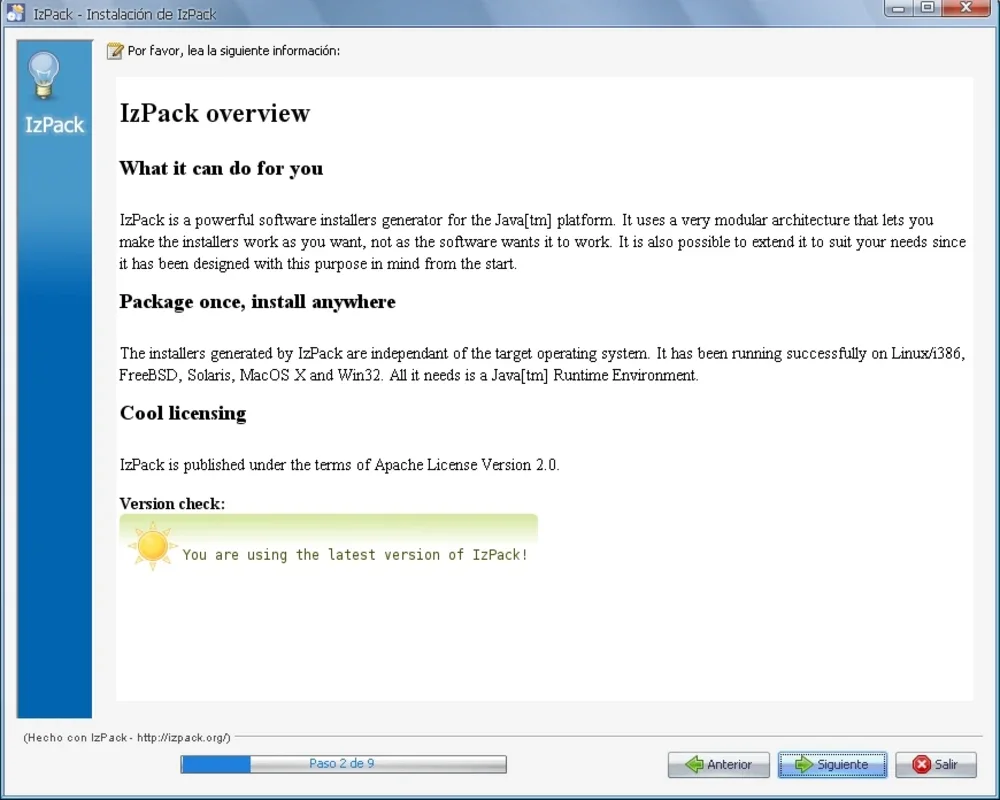IzPack App Introduction
IzPack is an open-source, cross-platform tool that empowers Java developers to create robust and user-friendly installation assistants for their applications. Unlike many installers that require specialized knowledge or proprietary software, IzPack leverages the power of XML configuration, making it accessible and adaptable for a wide range of projects. This guide delves into the intricacies of IzPack, exploring its features, benefits, and practical application.
Understanding IzPack's Core Functionality
At its heart, IzPack simplifies the complex process of software deployment. It streamlines the creation of installers, eliminating the need for extensive coding or reliance on platform-specific tools. The core functionality revolves around an XML configuration file that meticulously defines every aspect of the installation process. This declarative approach offers several key advantages:
- Cross-Platform Compatibility: IzPack generates installers compatible with various operating systems, including Windows, macOS, and Linux, without requiring platform-specific code modifications. This significantly reduces development time and effort.
- Flexibility and Customization: The XML configuration file provides granular control over the installer's appearance, behavior, and functionality. Developers can customize every step of the installation process, from initial prompts to final completion messages.
- Ease of Use: While XML might seem daunting at first, IzPack's structure is intuitive and well-documented. The configuration file is relatively straightforward to edit, even for developers with limited XML experience.
- Open-Source and Community Support: As an open-source project, IzPack benefits from a vibrant community of developers who contribute to its ongoing development and provide support to users.
Setting Up Your IzPack Development Environment
Before embarking on your IzPack journey, ensure you have the necessary components installed:
- Java Development Kit (JDK): IzPack requires a JDK to function correctly. Download and install the appropriate JDK version for your operating system.
- IzPack Distribution: Download the latest IzPack distribution from the official website. This typically includes the IzPack library, documentation, and example projects.
- Text Editor or IDE: You'll need a text editor or Integrated Development Environment (IDE) to create and edit the XML configuration file. Popular choices include Notepad++, Sublime Text, IntelliJ IDEA, or Eclipse.
Creating Your First IzPack Installer
The process of creating an IzPack installer involves several key steps:
- Project Setup: Create a new directory for your project. This directory will house all the necessary files for your installer.
- XML Configuration File: This is the heart of your IzPack installer. The XML file defines the installation process, including the files to be installed, installation directories, and user interface elements. IzPack provides detailed documentation and examples to guide you through the XML structure.
- Installer Resources: Gather all the files and resources that need to be included in your installer. This typically includes your application's executable files, libraries, configuration files, and any other necessary components.
- Building the Installer: Use the IzPack command-line tool or Ant build script to compile your XML configuration file and resources into a distributable installer package. This process generates an executable installer file that can be deployed to end-users.
Advanced IzPack Features
IzPack offers a range of advanced features to enhance the functionality and user experience of your installers:
- Custom Panels: Create custom panels to gather user input, display information, or perform specific actions during the installation process.
- Conditional Logic: Implement conditional logic to control the installation process based on user input or system configurations.
- Uninstallation Support: IzPack provides built-in support for creating uninstallers, ensuring a clean removal of your application.
- Localization: Support multiple languages by creating localized versions of your installer.
- Automated Updates: Implement automated update mechanisms to keep your application up-to-date.
Comparing IzPack to Other Installation Tools
IzPack distinguishes itself from other installation tools through its flexibility, open-source nature, and reliance on XML configuration. While tools like Inno Setup (Windows-specific) offer a user-friendly interface, IzPack provides greater control and cross-platform compatibility. Similarly, InstallShield, a commercial tool, offers advanced features but comes with a significant cost. IzPack provides a compelling alternative for developers seeking a powerful, free, and cross-platform solution.
Conclusion
IzPack empowers Java developers to create professional, user-friendly installation assistants without the need for extensive coding or specialized knowledge. Its open-source nature, cross-platform compatibility, and flexible XML configuration make it a valuable tool for any Java project. By mastering IzPack, developers can significantly improve the deployment process, ensuring a smooth and efficient user experience.
